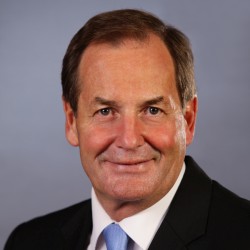By Luke Voogt
Geelong ratepayers have officially lost their mayoral vote after a State Government bill passed parliament last week.
“The Andrews Government has denied the right of greater Geelong voters to directly elect their municipal leaders,” said Western Victoria MP Simon Ramsay.
The City of Greater Geelong Amendment Bill 2017 abolished the direct mayoral vote after the coalition failed to garner enough upper house numbers for an amendment.
The coalition wanted Geelong to use the Melbourne model of a public vote for a mayor and deputy on the same ticket.
Labor’s bill followed the recommendations of a government-commissioned “Citizens’ Jury” in Geelong earlier this year.
The jury at first voted in favour of a directly elected mayor but had to vote again to achieve the process’s required “super majority” decision.
The second vote produced a reverse result, favouring the previous system of councillors choosing the mayor among themselves.
Mr Ramsay said the jury acted in good faith but was constrained under the government’s “parameters” on the mayoral-vote decision.
An online Democracy in Geelong survey, in conjunction with the jury, found that 59 per cent of 956 respondents wanted to keep their mayoral vote.
But Local Government Minister Natalie Hutchins said the bill gave Geelong the council “it wanted”.
“This is a historic day for the city and I’m proud of everyone involved in making it happen – particularly the members of the Geelong Citizens Jury,” she said.
Under the Andrews Government changes, councillors will choose the mayor and deputy for two-year terms.
Ms Hutchins said the councillors electing the mayor would mean “a more co-operative council”.
Ratepayers will elect 11 councillors across four wards. Three wards will have three councillors and one ward will have two.
Ms Hutchins said the structure would mean better representation of local needs, increased accessibility to councillors and greater collaboration on the council.







